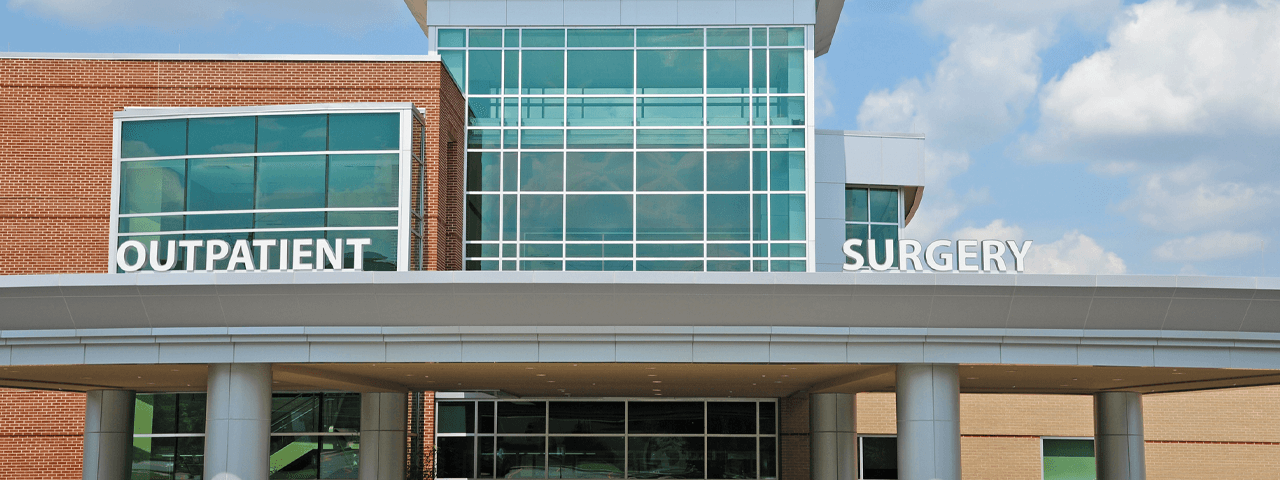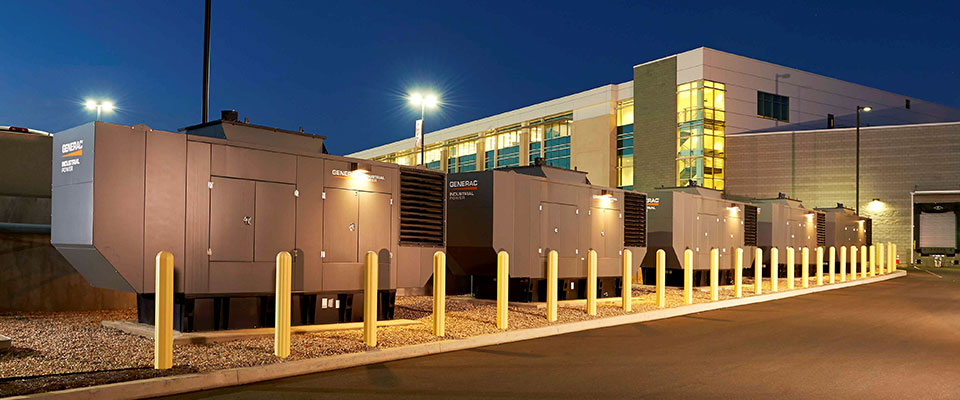


Everyone knows that when hospitals are not functioning due to an outage, they place the lives of patients, staff members and visitors at risk. What administrators and facility managers often do not realize is that during a time of crisis, a lit hospital is like a beacon to residents. Many visitors won't leave and many community members flood in, looking for shelter, assistance, food and water.
If your hospital backup generators are only sized to supply your most critical functions, you will likely have issues handling this crowd of people. Elevators may not be operating, hallways may not be lit and your cafeteria may not be able to serve food. Your generators need to be able to provide the power to support all of your community, not just your patients and staff.
In addition, recent trends also show the healthcare industry is moving to a hub-and-spoke model to provide more localized care. This means ambulatory surgery centers, long-term care facilities and hospice centers may require healthcare backup power to ensure critical procedures are not interrupted in the event of a utility outage, as well as maintain patient safety and comfort.
While healthcare facilities do not need to be Tier 4 compliant for engines, many utilities require compliance to obtain access to their generation. The issue for hospitals is the extra maintenance requirements that are associated with Tier 4 engines, including the emissions systems.
It is well known that hospitals and many other healthcare facilities must adhere to National Electric Code (NEC) 700 and National Fire Protection Association (NFPA) 110 standards, meaning emergency power must be available within 10 seconds to life safety and critical branch loads if a utility failure occurs.
What is not as well known is that over time, healthcare facilities often open new wings or add new state-of-the-art equipment to better serve patients. It becomes unclear what systems are linked to the generators, and performing routine load bank exercises do not provide this vital information. While it may seem unsettling, the best test is to kill power to the building and determine which loads are actually connected to the backup system. It is better to do this before an actual emergency occurs, so staff members have time to react and correct any issues or add generators, if needed.
In addition, administrators, facility managers, and specifiers may need to meet state and municipal codes for the location of generators and minimum generator runtime standards. For example, emergency generators need to be protected from floods, earthquakes, and fire, so those requirements typically rule out most basement and rooftop placements.
While diesel has been the traditional fuel choice, many healthcare facilities are now using natural gas or bi-fuel generators, upon approval of the AHJ, to meet runtime requirements during times of crisis.
Two Natural Solutions
Bi-Fuel is a great option for healthcare facilities because it provides the best of both worlds. You meet the on-site fuel requirements of NEC 700 and NFPA 110 because you have a diesel storage tank, but obtain the benefits of longer runtimes as the generator transitions to natural gas under load. Generac offers fully integrated solutions that are the only EPA-compliant generators straight from the factory in both the 500 kW and 600 kW nodes. These units can also be paralleled to create even larger kW requirements.
Natural gas generators are also being specified for many healthcare facilities, as the permitting requirements are easier. In addition, more AHJ’s are now considering the natural gas pipeline network to be an acceptable on-site fuel storage, as this strong underground network is rarely impacted by weather or other crisis events, allowing you to meet code requirements related to having a reliable fuel source.
Another advantage is that there is less maintenance associated with natural gas generators.

Generac’s innovative Modular Power System (MPS) can provide the needed large kWs for hospitals along with the benefits of redundancy, scalability, and safety, through integrated paralleling.
While it rarely happens, should your single large kW backup generator fail in an emergency, lives are at risk. With Generac’s MPS, you have at least one other backup/emergency generator operating to ensure critical operations continue. This means the kW requirements of the smallest genset in the paralleled system is sized appropriately to meet those needs.
With our unique MPS, you can also combine generators using a variety of fuels such as diesel and natural gas. This not only gives you the benefits of genset redundancy, but now you have fuel redundancy as well.
Generac’s MPS approach does not require dedicated switchgear sections. Future expansion generators simply tie directly to the generator bus. Because the paralleling is already built into our generators, the MPS system fundamentally has greater flexibility for growth, requires less electrical room space, and reduces initial capital cost.
Whether it be multiple generators in parallel, or a large single engine generator, Generac has the product solution to meet your requirements.
Nursing Homes and Long-Term Care Facilities Need Low Maintenance Units
Diesel generators require constant care. With engine requirements for low-sulfur diesel fuel, the fuel now needs to be re-conditioned every 12-16 months to ensure stability and ease of flow. This fuel requirement, along with the maintenance of the exhaust after treatment system, requires an experienced facility manager to handle this process. If you do not have this person on staff, you would need to turn to a third-party provider for the service, which will add cost. It will also require the rental of a backup generator during servicing when not using a MPS solution.
To reduce the maintenance burden, many short and long-term care facilities are turning to natural gas generators, as they need little maintenance. They are also eco-friendly with fewer emissions and a smaller carbon foot print.
Generac has more than five decades of experience in working with health care facilities—it’s one of the reasons we have expanded our product line to meeting ongoing needs. We have added large kW diesel generators to meet growing power needs. At the same, we developed innovative natural gas and bi-fuel generators, providing longer runtime to meet code requirements as well as provide extended protection for patients, staff, and visitors.
We also have a nationwide network of Industrial Power Distributors to offer support during every part of the process from sizing to specifications to design and installation. Your patients and staff depend on you. Now, you can depend on Generac.

Healthcare Case Studies
Assisted Care Facilities Choosing Backup Power Systems
Providing Standby Power for a Coosa Valley Medical Center
The Power to Save Lives at a Community Hospital
Hospital Weathers Hurricane and Power Outages
Medical Data Center Security Records with MPS
Whitepapers
Generac Industrial Power offers an extensive product line—from 15 kW through 3.25 MW single generators—and as much as 100 MW through our innovative MPS technology. Our brawny diesel gensets can be paralleled with our natural gas and BI-FUEL™ units, providing the extended runtimes more customers are demanding. You can also choose from larger alternators, sound attenuated enclosures, extreme performance enclosures, a variety of control systems, and different size base tanks. Each one designed to meet your specifications seamlessly.

Click the button below, and one of our experts will reach out to discuss how Generac Industrial Power solutions can meet your specific needs.